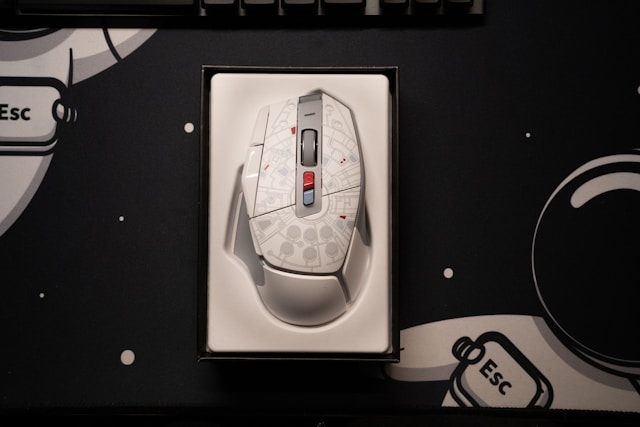Photoshop has many tools. Some are easy. Some are not. The Quick Selection Tool is one of the easy ones. It helps you cut, move, and edit parts of a photo fast.
But many people don’t know where to find it. This guide will help you. Step by step. Simple words. Easy to follow.
Let’s start.
How to Find Quick Selection Tool in Photoshop?
What Is the Quick Selection Tool?
The Quick Selection Tool is for selecting parts of an image. It works like a brush. You click and drag. It finds the edges of the object. Then it selects that area.
This tool is very helpful. You can change the background. You can cut out a person. Or move something to another image. All very fast.
Where Is the Quick Selection Tool?
You can find it in the toolbar. That’s the long bar on the left side of your screen. The icon looks like a paintbrush with a dotted circle.
Sometimes you don’t see it right away. Photoshop hides tools under other tools. So you might need to click and hold an icon. Then a small menu shows more tools.
Here’s how to find it:
-
Open Photoshop.
-
Look at the left toolbar.
-
Find the Object Selection Tool or Magic Wand Tool.
-
Click and hold that icon.
-
A small list appears.
-
Choose Quick Selection Tool from that list.
Now it’s ready to use.
How to Use the Quick Selection Tool?
After you find the tool, using it is easy.
-
Open your photo.
-
Choose the Quick Selection Tool.
-
Go to the top bar. Set brush size.
-
Click and drag over the object you want to select.
-
Keep dragging until all of it is selected.
Photoshop helps you. It tries to find the edges of the object.
Want to add more to the selection? Just drag again. Want to remove part? Press the Alt key (Windows) or Option key (Mac) and drag. That removes extra parts.
Change Brush Size
Sometimes you need a bigger brush. Sometimes a smaller one.
Here’s how to change it:
-
Look at the top bar.
-
Find the brush size option.
-
Choose a number. Higher is bigger. Lower is smaller.
Or use keyboard shortcuts:
-
Press
[to make it smaller. -
Press
]to make it bigger.
This helps when you work on small or detailed parts of a photo.
What to Do If the Tool Is Missing?
Can’t find it? Don’t worry.
Here are possible reasons:
1. The toolbar is in compact mode
Photoshop has two toolbar views. Full and small. Maybe yours is in small mode.
To fix it:
-
Go to the top.
-
Click Window > Tools.
-
Choose the full toolbar.
2. The tool is hidden under another tool
As said earlier, tools are grouped. If you see the Magic Wand Tool or Object Selection Tool, click and hold. You will find the Quick Selection Tool under it.
3. Using the older version of Photoshop
Older versions may not have it in the same place. Or the name is different.
You can also reset the tools:
-
Right-click the toolbar.
-
Choose Reset Tool or Reset All Tools.
Now check again.
Shortcuts to Open the Tool
Want to save time? Use the keyboard.
The shortcut key is W.
But if it opens a different tool like Magic Wand, press Shift + W to switch. It moves between tools in the same group.
Keep pressing until you see the Quick Selection Tool.
Use in Photoshop Versions
Photoshop CC
In the newer versions, the tool is always under the Object Selection Tool.
Photoshop CS6
It’s also in the toolbar. Same group as Magic Wand.
Photoshop Elements
Some versions do not have the exact tool. But they have similar tools. Like the Selection Brush Tool. It works almost the same.
So, the tool is in almost all Photoshop versions. Just the icon may change.
Use Tool with Layers
Layers make editing easier.
Before you select, check your layers.
-
Open the Layers Panel on the right side.
-
Make sure the correct layer is active.
-
Select with the Quick Selection Tool.
You can also copy the selected area:
-
Press Ctrl + J (Windows) or Cmd + J (Mac).
-
This makes a new layer from the selected part.
Now edit that layer. The original stays safe.
Use Tool for Background Removal
Want to remove a background?
Use this tool. It’s easy.
-
Select the object with the Quick Selection Tool.
-
Check the edges. Fix if needed.
-
Press Delete to remove background. Or press Ctrl + J to make a new layer with the object.
You can now add a new background.
This is useful for product photos, profile pictures, or art.
Use with Mask for Better Control
Masks help you edit safely.
Here’s how to do it:
-
Select the area with the Quick Selection Tool.
-
Click the Add Layer Mask button at the bottom of the Layers panel.
-
Now you hide the background, not delete it.
You can bring it back anytime.
To adjust the mask:
-
Paint with black to hide more.
-
Paint with white to show more.
Use the brush tool for this. Soft brush works best.
Common Problems and Fixes
1. Tool selects too much
Lower the brush size. Zoom in. Drag slowly.
2. Tool misses small parts
Zoom in. Use a smaller brush. Drag over missed parts.
3. Edges look rough
Use the Select and Mask option. It’s at the top bar.
There you can smooth, feather, or shift the edge.
4. Tool not working
Check if the correct layer is selected. Check if it is a raster layer, not a shape or text.
Best Practices
-
Always zoom in. You see better.
-
Use small brushes for edges.
-
Fix selection before editing.
-
Save a copy before big edits.
-
Try on simple images first.
Practice helps you get faster.
Quick Selection Tool vs. Magic Wand Tool
People confuse these tools.
Here’s the difference:
Quick Selection Tool – You drag like a brush. It follows shapes and lines.
Magic Wand Tool – You click one spot. It selects areas of the same color.
Quick Selection is better for objects. Magic Wand works well for flat color areas.
Use with Refine Edge or Select and Mask
After you select something, you may want smoother edges.
Use the Select and Mask option:
-
Click on it from the top bar.
-
A new window opens.
-
Use sliders to adjust edge.
-
Smooth, feather, and shift edge.
-
Use the refine brush tool to paint hair or fur.
This makes your selection clean and natural.
Best Use Cases for Quick Selection Tool
-
Cutting out people from backgrounds
-
Moving objects to other photos
-
Changing image backgrounds
-
Creating product mockups
-
Editing profile photos
-
Designing banners or flyers
It’s great for both simple and complex edits.
Mistakes to Avoid
-
Using big brush for small areas
-
Not zooming in
-
Not checking edge after selection
-
Editing the background instead of selected object
-
Forgetting to work on the correct layer
Stay alert. Double-check. Work slowly at first.
Tools That Work Well With It
You can combine tools.
Here are some:
-
Lasso Tool – Use after Quick Selection to fix parts.
-
Refine Edge Brush – Clean hair and fur.
-
Layer Masks – Edit without damage.
-
Zoom Tool – See more details.
Mixing tools gives better results.
FAQs
1. Is the Quick Selection Tool free in Photoshop?
Yes. It is part of the main Photoshop tools. You don’t need to pay extra.
2. Can I use it on text?
No. You need to rasterize the text first. Then it works.
3. What does the W key do?
It opens the Quick Selection Tool group. Press Shift + W to switch tools in that group.
4. Why does my tool select the background too?
The brush may be too big. Try a smaller size. Also, zoom in and drag carefully.
5. Can I use it on mobile Photoshop?
Photoshop mobile does not have all tools. But you can use similar selection tools.
6. Does it work on all image types?
Yes. But it works best on clear, high-quality images with good contrast.
7. Is it better than the Pen Tool?
Pen Tool is more precise. But slower. Quick Selection is faster and easier for beginners.
8. Why is it not showing in my toolbar?
It may be hidden. Try clicking and holding other selection tools to see it.
Conclusion
The Quick Selection Tool in Photoshop is easy to find and use. It saves time. It helps you select and edit parts of your image fast.
Remember to look in the toolbar, under the same group as Magic Wand. Use small brushes for better results. Fix your edges with the Select and Mask tool. Practice a few times. You will get better.
This tool is simple. But very useful. Now you know where to find it—and how to use it like a pro.






